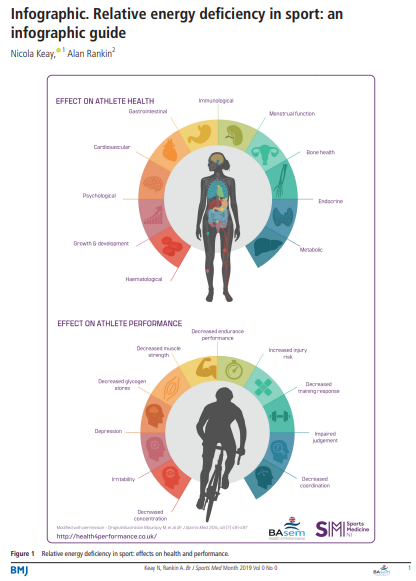Your athlete has always been a top performer on their team. Maybe one of the fastest on the cross country team. Maybe a top performing gymnast or dancer at their level. Maybe they are on track to get a soccer scholarship to college. Everything is going great, until the one race, the one meet, the one performance, the one game where it suddenly isn’t. The athlete suddenly almost stops in their tracks. They tell you they are doing everything that they always do, but today they can’t quite get their legs to move faster, their body to turn quicker, or they feel stuck and tired and can’t advance. And it continues practice after practice, and event after event.
In some athletes it could be a more subtle decline in performance but this is the complaint that I hear the most often, and, regardless of how it presents, athletes still report frustrations like decreased performance, fatigue, dizziness and/or light-headedness, or “heavy legs”. Many athletes show up in my office with this as their main complaint or they mention this as they share with me their athlete journey and what all has brought them to see me today. They are baffled at what could be happening as they typically feel like they have not made any major changes to their diet, their hydration or their schedule.
As their sports dietitian I, of course, look at their overall nutrient intake, hydration status and the big picture. However, what immediately comes to mind to check when I get complaints like this is (1) IRON - what is this athlete’s iron status? And (2) WHY might the athlete’s iron status be low?
Often times I see low iron in my very high performing elite young athletes. The ones practicing hours almost every day at high levels. It can come from overlooking certain foods in their daily intake, from consistent underfueling (often unintentional), or from increased iron losses due to the nature of their sport.
In my 8+ years of practice, I didn’t realize how prevalent low iron was until about the last 4 or 5 years. Now, in the last couple of years I have really started monitoring it in the the athletes that have come to see me with these kind of complaints.
So this is what I’m going to talk with you about today. Today I want to shed some light on this important mineral, iron. What it does for us, why our athlete’s levels may be low, and how it affects our athlete’s performance. Let’s dive in….
Iron is…
A mineral that is needed for the production of red blood cells and for the transport of oxygen throughout the body.
3 Reasons an Athlete May Have Low Iron:
Special diets
An athlete that avoids meat or who is a vegetarian or vegan is at risk of not consuming enough iron.
Increased iron breakdown / losses
Increased iron losses can occur in sports with repetitive footstrike like distance runners. This is called foot strike hemolysis.
Small amount of iron can be lost in the sweat and in the urine.
Inflammation can negatively affect iron levels
Iron lost each month in post-menarcheal female (have started their periods)
RED-S
A high-performing athlete that has been restricting or unintentionally underfueling is at risk of low iron intake and therefore low iron stores.
There is a tricky relationship between low iron stores and low energy availability (RED-S). If an athlete is suffering from low iron or anemia it can make it harder for them to get out of their state of RED-S. This is because, if the body is low or deficient in iron or iron stores, it makes it harder to do any given skill and definitely harder to perform at the athlete’s peak. This is causing their body to work harder than usual at any given skill, which expends more calories, making it harder to get out of their state of Low Energy Availability. And they have low iron because of their underfueling, It can become a tough cycle to break.
Reasons for Low Iron Specific to Young Athletes…
Rapid growth and development that happens in childhood and adolescence can increase dietary iron needs. Participating in sports at a high level of training also places a demand on the body’s need for iron. The two together can create a significant increase in the body’s need for iron to function well.
This increased need for iron often comes at a time when the athlete may be skipping meals, choosing to snack throughout the day vs sit down for balanced meals or try “special diets” that they see friends of celebrities promote. These factors all lead to an increased risk of low iron or iron deficiency with or without anemia in the young athlete.
Signs/Symptoms of Low Iron (or low ferritin)…
Fatigue
Shortness of breath
Dizziness / light-headed
Nausea
Pale skin
Complaints of feeling heavy (“heavy legs” is what I hear most frequently)
Checking Your Iron Levels…
I highly recommend that you get your iron levels checked before trying to supplement as iron supplements are known to have negative GI effects and, as it is a mineral, an athlete can get too much. If your athlete does have low iron levels, your MD or sports RD will likely recommend a certain amount of iron for a certain number of weeks and then recheck it. It is typically not something that you supplement at a high dose forever.
When you request iron labs, it’s important not to just get “an iron” and don’t just get a CBC (which looks at your hemoglobin, hematocrit, etc.) as these are usually not effected until a deficiency is more severe. Where you really want to start is with a ferritin as this is the body’s storage form of iron. Iron deficiency has 3 stages, 1 being least severe and 3 being most severe.
The 3 Stages of Iron Deficiency…
Stage 1: iron insufficiency or depletion.
A low ferritin
Stage 2: iron deficiency without anemia
Further decreased ferritin
Decreased transferrin saturation
Increased total iron binding capacity (TIBC)
Stage 3: iron deficiency with anemia
Further decreased ferritin
Decreased transferrin saturation
Increased total iron binding capacity (TIBC)
Low hemoglobin
Iron Supplementation & Side Effects…
If your athlete is complaining of fatigue and decreased performance or you are worried they may have RED-S, I encourage you to get with a sports dietitian. Don’t just go out and start an iron supplement. Get your labs checked and meet with a professional! With my clients, sometimes all they need is to improve their dietary intake and we work together to achieve that. Others have lab values that indicate they need more than what they can get from diet alone and so I recommend a mix of supplement + teach them how to optimize their iron intake in their diet. Then I monitor any negative side effects they may have and either help them reduce those or alter their supplement if needed.
If you are at a point where you think your athlete needs their iron checked, it will be best to start working with a sports medicine physician and / or sports dietitian. We can help you interpret your results and get your numbers back to optimal levels, whether through diet, supplement or a combination of the two!
I have worked with so many athletes struggling with low iron from Stage 1 to Stage 3. If you would like to speak with me about working together, you can reach out to me any time at taylor@taylored-nutrition.com. I would love to chat with you!
Wishing you a well-fueled athlete!
Taylor



